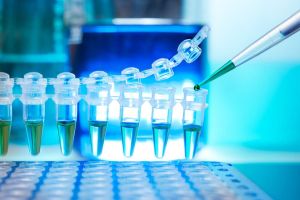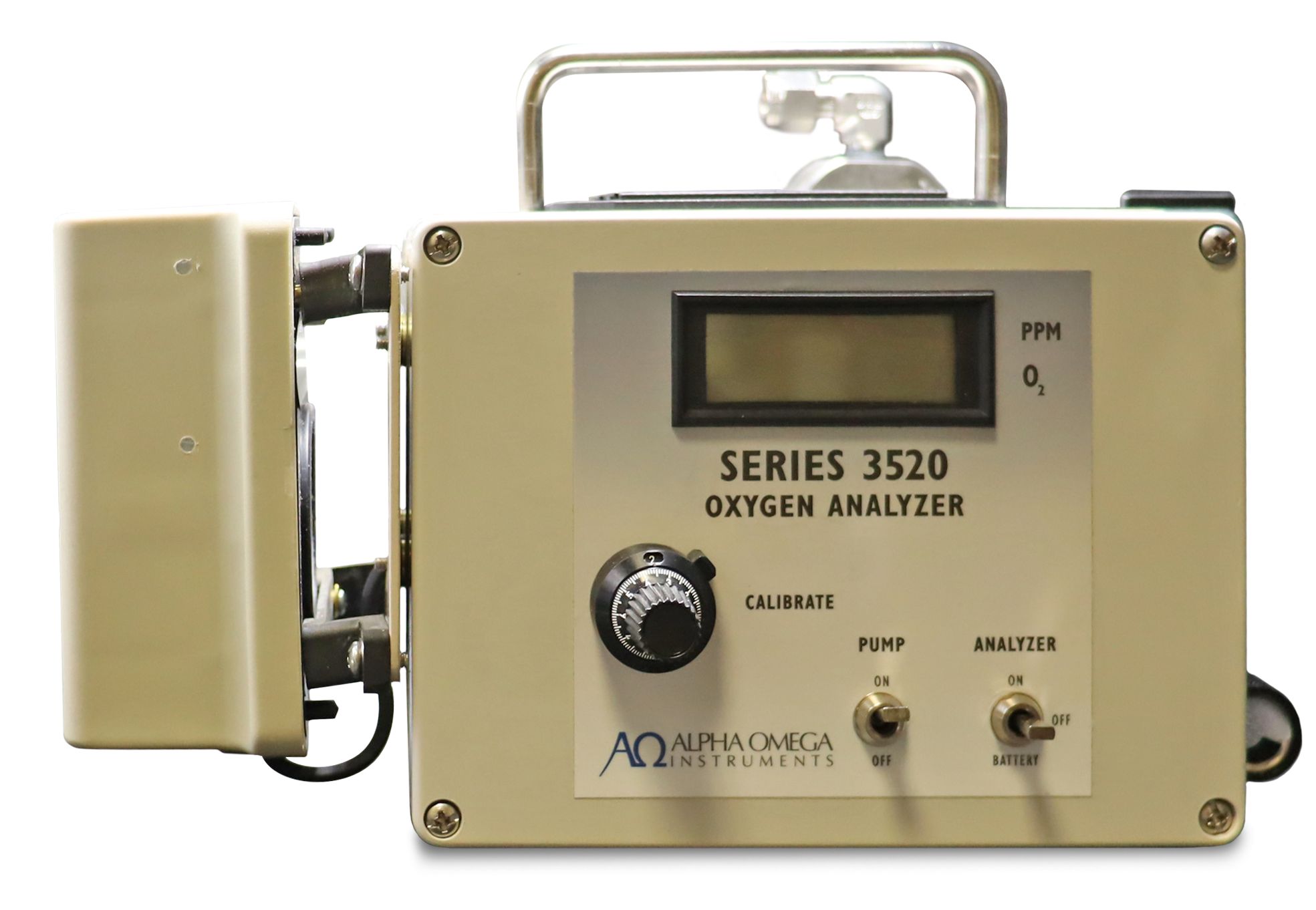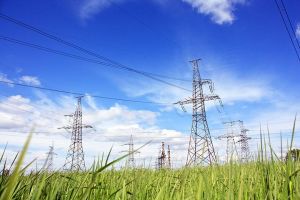Oxygen Analyzers
Trace & Percent Oxygen Analyzers, Transmitters, & Safety Monitors
OXYGEN ANALYZERS FOR INDUSTRIAL, LAB & RESEARCH, AND CLEANROOM ENVIRONMENTS
With over 30 years’ experience, our portfolio of ALPHA OMEGA INSTRUMENTS™ trace and percent oxygen analyzers and transmitters, safety monitors (oxygen deficiency), are cost-effective and reliable. Our analyzers provide precise and continuous measurement for industrial, commercial, government, and educational uses. They are available in benchtop, wall mount and portable configurations.
OUR PORTFOLIO OF OXYGEN ANALYZERS AND MONITORS
- Trace oxygen analyzers
- Percent oxygen analyzers
- Portable oxygen analyzer
- Oxygen deficiency monitors
OUR PORTFOLIO OF OXYGEN ANALYZERS FOR INDUSTRIAL APPLICATIONS
Accurate measurements are important for industrial processes that require precise amounts of oxygen. These industries include aerospace, biotechnology, chemical, food and beverage, medical manufacturing, petrochemical, pharmaceutical, pulp and paper, water and wastewater treatment, and more. Specific applications include:
- Food packaging
- Glove boxes and environmental chambers
- Laboratories
- Manufacturing
- Oven applications (curing/heat treating)
- Welding
For process safety purposes, analyzers provide crucial measurement to ensure worker safety by making sure process levels of oxygen stay within defined limits. Available in benchtop, wall mount and portable configurations.
PROCESS CONTROL REQUIRES OXYGEN MONITORING
Have a critical process that demands accurate measurement of oxygen? Learn more about process monitoring.
RMA
Need service or calibration for your oxygen analyzer? No problem. We are ready to assist you with any technical or service-related inquiries.
Just complete our Oxygen Monitor RMA.
SALES | TRAINING INQUIRIES
AMERICAS: info.americas@process-insights.com
EMEAI (includes India): info.emeai@process-insights.com
APAC: info.apac@process-insights.com
CHINA: info.cn@process-insights.com
-

SAFETY
We Care About Safety
If you are concerned over unsafe levels of oxygen explore a complete line of oxygen deficiency monitors and accessories. We supply many instruments to medical, aerospace, and municipalities. Occupational Safety and Health Administration (OSHA) defines an oxygen deficient environment when oxygen levels fall below 19.5 percent. Oxygen deficient environments require accurate and reliable instrumentation. Oxygen levels below 16% is dangerous to human life.
Explore why safety monitoring matters.
-

BENEFITS
The ALPHA OMEGA INSTRUMENTS trace and percent oxygen analyzers offer several benefits:
- Accuracy: These analyzers are designed to provide highly accurate measurements of trace and percent oxygen levels in various applications, including industrial processes, medical facilities, and research laboratories.
- Reliability: Built to withstand harsh industrial environments and provide reliable and continuous monitoring of oxygen levels.
- Flexibility: Can be customized to suit different applications and are available in various configurations, including portable, wall mount and benchtop models.
- Ease of use: Designed with user-friendly interfaces, making them easy to operate and maintain.
- Low maintenance: These analyzers are low maintenance, with long-lasting sensors that require minimal calibration and replacement.
- Cost-effective: Offer a cost-effective solution for oxygen monitoring, with low operational costs and a long service life.
BENEFITS OF USING OXYGEN ANALYZERS
There are several benefits to using an oxygen monitor in various applications:
- Safety: One of the primary benefits of using an oxygen monitor is improved safety. Oxygen monitors can alert workers, patients, or others to low oxygen levels, which can help to prevent accidents, injuries, and fatalities.
- Compliance: In many industries, such as mining or chemical production, there are regulations and standards for oxygen levels that must be met. By using an oxygen monitor, companies can ensure compliance with these regulations and avoid fines or other penalties.
- Efficiency: In industrial processes, monitoring oxygen levels can help to improve efficiency and reduce waste. By monitoring oxygen levels, companies can optimize processes and reduce the use of costly materials or energy.
- Quality control: In food packaging or other applications where the oxygen concentration is critical to the quality of the product, oxygen monitors can help to ensure consistent quality and prevent spoilage.
- Peace of mind: In medical applications or other settings where oxygen levels can be a critical factor, using an oxygen monitor can provide peace of mind to patients, workers, or others who may be concerned about their safety.
-

APPLICATIONS FOR OUR OXYGEN ANALYZERS
Our oxygen analyzers ensure safe working environments in any laboratory, scientific, medical, or industrial application utilizing oxygen depleting gases. Our monitors continuously monitor oxygen levels. Permanently installed oxygen analzyers should be used as a first line of protection.
- Medical and Healthcare Industry: Uses inert gases for many reasons like MRI facilities use Helium to cool MRI machines, cryogenics use liquid nitrogen, helium or argon, fertilization, and cryo-storage facilities; laboratories often use compressed gases including argon, nitrogen, and carbon dioxide.
- Pharmaceutical Manufacturers: Use nitrogen and carbon dioxide to maintain sterile environments throughout the manufacturing and packaging processes.
- Food and Beverage Industry: Use carbon dioxide and nitrogen gas for a range of uses. Nitrogen is used in the food preservation process to remove oxygen from the manufacturing environment.
- Semiconductor Manufacturers: Monitor process gas levels to reduce impurities that can impact the quality of the components and devices being manufactured.
- Chemical manufacturing: Oxygen monitors are used to ensure that the oxygen levels in chemical processing environments are within safe and optimal ranges.
- Food and beverage processing: Oxygen monitors are used to ensure that the packaging of perishable foods and beverages is done in an oxygen-free environment to increase shelf life.
- Metal processing: Oxygen monitors are used to monitor the oxygen levels in metal processing environments to prevent oxidation and ensure the quality of the final product.
- Energy production: Oxygen monitors are used in various energy production applications, such as monitoring oxygen levels in combustion processes in power plants and ensuring the safety of personnel working in confined spaces in the oil and gas industry.
- Medical: Oxygen monitors are used in medical applications to monitor oxygen levels in the breathing air of patients and to ensure that the correct oxygen concentration is delivered during medical procedures.
- Aerospace: Oxygen monitors are used in aerospace applications to measure oxygen levels in aircraft cabins and to ensure that the air quality is safe for passengers and crew.
- Environmental monitoring: Oxygen monitors are used to monitor the oxygen levels in lakes and rivers, and to measure oxygen levels in the atmosphere.
-

how do oxygen analyzers work?
Oxygen analyzers function differently depending on their intended use application. There are two main application types–open diffuser applications and extractive applications. In an open diffuser application, the analyzer’s sensor is directly exposed to the ambient air surrounding it at close to atmospheric pressure. Conversely, in an extractive application, the sensor is installed in a sensor housing (small chamber) as part of a sampling system. Below, we explore how an analyzer works in each of these scenarios.
Open Diffuser Applications
Oxygen deficiency monitors are the primary example of analyzer technology used for an open diffuser application. In this scenario, no sampling system is needed, and the only requirements are continuous measurement and notification (i.e. alarms) of gas levels outside the desired range.
For example, our ALPHA OMEGA INSTRUMENTS™ Series 1300 Oxygen Deficiency Monitor features an ambient temperature electrochemical sensor with an Enhanced Electrolyte System (EES) with a weak acid electrolyte system. The weak acid electrolyte system retards passivation of the sensor anode by allowing the products of oxidation to dissolve in the acid electrolyte. In effect, the sensor is renewed continuously as the weak acid electrolyte tolerates over 20 times the lead oxide (PbO) than potassium hydroxide (KOH) based sensors.
The result is a sensor with a greatly extended useful life as well as providing exceptional measurement stability. By measuring the voltage that is a result of the electrochemical process, the oxygen concentration can be accurately determined.
Another open diffuser scenario involves percent oxygen measurements within processes using environmental control chambers. Some examples are glove boxes, anaerobic chambers, and food packaging machines where an open diffuser sensor can be utilized as long as the chamber pressure is at atmosphere or ≤1.5 psig. For this need, our OXY-SEN™ Oxygen Monitor and Series 2000 Percent Oxygen Analyzer (with our OXY-SEN™ sensor) are both suitable.
Another option for an environmental control chamber application is to use analyzers that are equipped with an extractive sample system, including a pump directly inside the environmental chamber, conditions permitting. Our battery-operated portables Series 2520 (percent) and Series 3520 (trace) are great options for this application. If, however, conditions do not permit locating the instrument in the environment, then we recommend using one of our instruments with an extractive sample system outside the chamber.
Extractive Applications
Most process applications measure gases from a process rather than an ambient environment. In the process, there are conditions (e.g. pressure, temperature, relative humidity, etc.) that may vary widely, so “extracting” and conditioning a sample may be required. In extractive applications, the sensor is installed in a housing (small chamber) as part of a sampling system. As the sample gas passes through the sensor housing, the voltage produced by the electrochemical process can be measured and the oxygen concentration can be determined accurately.
For extractive applications requiring percent level measurements, our Series 2000, 2500, 2510 and 2520 analyzers feature an extended life oxygen sensor with a weak acid electrolyte system. The weak acid electrolyte system retards passivation of the sensor anode by allowing the products of oxidation to dissolve in the acid electrolyte. In effect, the sensor is renewed continuously as the weak acid electrolyte tolerates over 20 times the lead oxide (PbO) than potassium hydroxide (KOH) based sensors. The result is a sensor with a greatly extended useful life. Different options are available to meet your sample condition requirements.
For extractive applications requiring trace (ppm) level measurements, our Series 3000, 3500, 3510 and 3520 trace oxygen analyzers feature an advanced trace oxygen sensor. This sensor is a lead-oxygen battery comprised of a lead anode, a gold-plated cathode, and an electrolyte consisting of potassium hydroxide.
For applications with CO2, we also have a sensor with an electrolyte that is a weak acid, so that it can handle up to 100% CO2. All of our trace level instruments come with manual isolation valves so the sensor can be isolated from ambient levels of oxygen when they are not being used to measure trace level process gases. Different options are available to meet your sample condition requirements.
-

WHAT IS AN OXYGEN ANALYZER USED FOR?
An oxygen analyzer, also known as an oxygen sensor or oxygen monitor, is used to measure the concentration of oxygen in a gas or liquid.
Oxygen analyzers are used in a wide range of industries and applications, such as:
- Industrial processes: In many industrial processes, it is important to monitor and control the concentration of oxygen to ensure the safety and efficiency of the process. For example, in chemical production or metal fabrication, oxygen analyzers are used to monitor the level of oxygen in the production environment and prevent safety hazards.
- Medical applications: Oxygen analyzers are used in medical settings to monitor the oxygen concentration in a patient’s blood or in the air they are breathing. This is important in critical care situations, such as during surgery or when a patient is on a ventilator.
- Environmental monitoring: Oxygen analyzers are used in environmental monitoring to measure the concentration of oxygen in bodies of water, such as lakes and rivers. This helps to monitor the health of the aquatic ecosystem.
- Food packaging: Oxygen analyzers are used in the food packaging industry to monitor the oxygen concentration inside food packaging. This helps to extend the shelf life of perishable products and prevent spoilage.
- Aerospace: In aerospace applications, oxygen analyzers are used to monitor the oxygen concentration in the air of spacecraft and aircraft cabins. This helps to ensure the safety and comfort of passengers and crew.
-

HOW MUCH DOES AN OXYGEN ANALYZER COST?
The cost of an analyzer depends on the use application and the type of oxygen sensor required. Oxygen analyzers used for industrial process monitoring applications start at $1,625 with Process Insights, which produces the highest quality analyzers manufactured in the United States. We provide a minimum, two-year electronics warranty and one-year oxygen sensor warranty on analyzers.
Unlike other manufacturers, we offer several, semi-custom configurations, which eliminates wasteful spending on unneeded “bells and whistles”. We also offer a base analyzer option, which allows you to provide your own sample conditioning.
The cost of oxygen deficiency monitors, used for continuous safety monitoring applications, start at $2,243. Our oxygen deficiency monitors are manufactured in the United States and offer three-year electronics and oxygen sensor warranties.
-

THINGS TO CONSIDER WHEN PURCHASING AN OXYGEN MONITOR
When purchasing an oxygen deficiency monitor, there are several factors to consider ensuring that you choose the best device for your needs. Here are some key considerations:
- Measurement range: Choose a monitor that can measure oxygen levels within the range required for your specific application. Some monitors may only be able to measure oxygen levels between 0-25%, while others may have a wider range.
- Accuracy: Look for a monitor with high accuracy and precision to ensure that the readings are reliable and consistent.
- Response time: Consider the response time of the monitor. In some applications, a faster response time may be necessary to detect oxygen depletion quickly and prevent dangerous situations.
- Alarm function: Look for a monitor with an alarm function that can alert users when oxygen levels fall below a safe threshold. Some monitors may have both audible and visual alarms.
- Calibration: Choose a monitor that is easy to calibrate and maintain. Some monitors may require regular calibration to ensure accuracy.
- Portability: Consider whether the monitor is portable and easy to move between different locations. Some monitors may be designed for permanent installation, while others are more portable.
- Price: Consider the cost of the monitor and ensure that it fits within your budget. However, it is important not to compromise on quality or accuracy for the sake of a lower price.
It is important to carefully consider these factors when purchasing an oxygen deficiency monitor to ensure that you choose a device that meets your specific requirements and provides accurate and reliable readings.
-

HOW TO CHOOSE AN OXYGEN ANALYZER TECHNOLOGY
Choosing the right oxygen analyzer depends on your intended application(s) and the type of oxygen sensor used. There is no “universal” oxygen sensor type that fulfills every use case. Knowing the strengths and weaknesses of each oxygen sensor type is vital for choosing the most suitable oxygen analyzer given your needs.
The four main oxygen sensors include:
- Ambient Temperature Electrochemical
- Paramagnetic
- Polarographic
- Zirconium Oxide
On mobile – table scrolls left to right.
Desired
Analyzer
AttributesAmbient
Temperature
ElectrochemicalParamagnetic Polarographic Zirconium
OxidePercent Measurement ✔
✔
✔
✔
Trace Measurement ✔
✔
✔
Percent & Trace Measurement ✔
✔
Can Measure Flammable Gas ✔
✔
Low Initial Cost ✔
User Replaceable Sensor ✔
Low-Cost Sensor Replacement ✔
Sensitive to Vibration and/or Position ✔
Below are additional details for various gas phase oxygen sensors. Use this information to help you select the right oxygen sensor type for your application:
AMBIENT TEMPERATURE ELECTROCHEMICAL SENSOR
- Often referred to as a galvanic sensor, is typically a small, partially sealed, cylindrical device (1-1/4” diameter by 0.75” height) that contains two dissimilar electrodes immersed in an aqueous electrolyte, commonly potassium hydroxide.
- Refinements in electrode materials, and enhanced electrolyte formulations, the galvanic oxygen sensor provides extended life over earlier versions and are recognized for their accuracy in both the percent and traces oxygen ranges.
- They are easy to damage when used with samples containing acid gas species such as hydrogen sulfide, hydrogen chloride, sulfur dioxide, etc.
PARAMAGNETIC OXYGEN SENSORS
- This is the magnetodynamic or `dumbbell’ type of design and is the predominate sensor type.
- The paramagnetic oxygen sensor consists of a cylindrical shaped container inside of which is placed a small glass dumbbell. The dumbbell is filled with an inert gas such as nitrogen and suspended on a taut platinum wire within a non-uniform magnetic field.
- A precision optical system consisting of a light source, photodiode, and amplifier circuit is used to measure the degree of rotation of the dumbbell.
- Some paramagnetic oxygen sensor designs have an opposing current applied to restore the dumbbell to its normal position.
- In general, paramagnetic oxygen sensors offer very good response time characteristics and use no consumable parts, making sensor life, under normal conditions, quite good.
- Offers excellent precision over a range of 1% to 100% oxygen.
- They are quite delicate and sensitive to vibration and/or position.
- Due to the loss in measurement sensitivity, in general, the paramagnetic oxygen sensor is not recommended for trace oxygen measurements.
POLAROGRAPHIC OXYGEN SENSORS
- Often referred to as a Clark Cell [J. L. Clark (1822- 1898)].
- This sensor, both the anode (typically silver) and cathode (typically gold) are immersed in an aqueous electrolyte of potassium chloride.
- The electrodes are separated from the sample by a semi-permeable membrane that provides the mechanism to diffuse oxygen into the sensor.
- The current output generated from the sensor is measured and amplified electronically to provide a percent oxygen measurement.
- An advantage of the polarographic oxygen sensor is that while inoperative, there is no consumption of the electrode (anode).
- Storage times are almost indefinite. Similar to the galvanic oxygen sensor, they are not position sensitive.
- One major advantage of this sensor type is its ability to measure parts per billion levels of oxygen.
- The sensors are position sensitive and replacement costs are quite expensive, in some cases, paralleling that of an entire analyzer of another sensor type.
- Not recommended for applications where oxygen concentrations exceed 25%.
ZIRCONIUM OXIDE OXYGEN SENSORS
- This sensor is referred to as the “high temperature” electrochemical sensor and is based on the Nernst principle [W. H. Nernst (1864-1941)].
- Zirconium oxide sensors use a solid-state electrolyte typically fabricated from zirconium oxide stabilized with yttrium oxide. The zirconium oxide probe is plated on opposing sides with platinum which serves as the sensor electrodes.
- The zirconium oxide oxygen sensor has excellent response time characteristics.
- The same sensor can be used to measure 100% oxygen, as well as parts per billion concentrations.
- Due to the high temperatures of operation, the life of the sensor can be shortened by on/off operation.
- A major limitation is their unsuitability for trace oxygen measurements when reducing gases (hydrocarbons of any species, hydrogen, and carbon monoxide) are present in the sample gas. At operating temperatures of 650 degrees Centigrade, the reducing gases will react with the oxygen, consuming it prior to measurement thus producing a lower than actual oxygen reading.
- The magnitude of the error is proportional to the concentration of reducing gas.
- Zirconium oxide oxygen sensors are the “defacto standard” for in-situ combustion control applications.
-
rohs-reach
SOLUTIONS FLYERS
-

AGRICULTURE
-

CHEMICAL
-

ENERGY
-

FOOD & BEVERAGE
-

FLARE GAS
-

INDUSTRIAL GAS
-

LAB & RESEARCH
-

PHARMACEUTICALS & LIFE SCIENCE
-

REFINERY
-

SEMICONDUCTOR
-

SPECIALTY GAS
by industry

AEROSPACE & GOVERNMENT

AGRICULTURE

IRON, STEEL & METAL

LABS & RESEARCH

MINING























